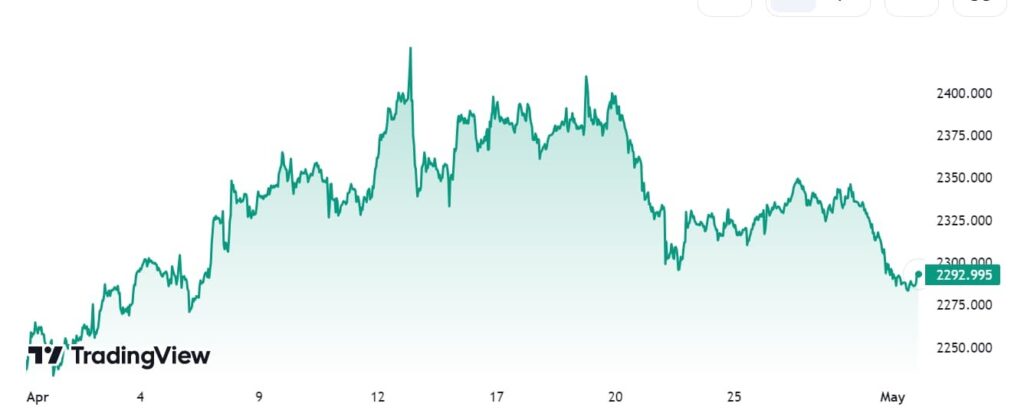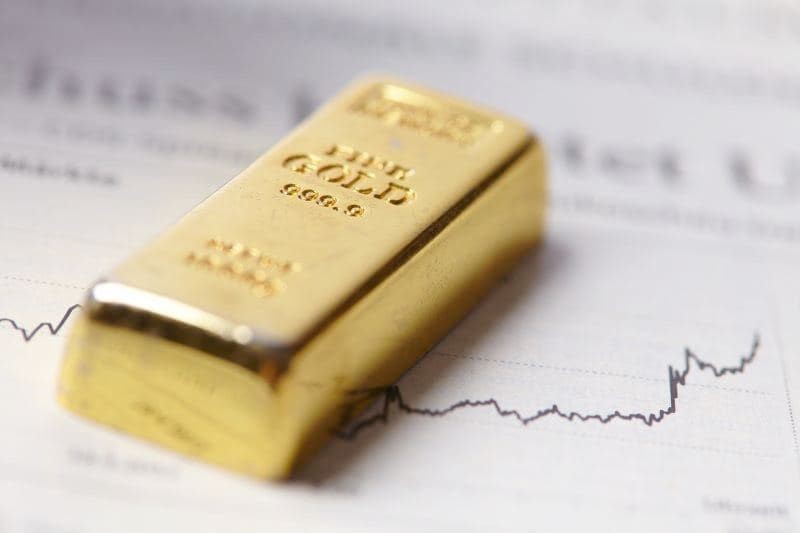Gold prices have slipped to a near one-month low, with the precious metal trading at $2,292 per ounce, down roughly 5.7% from its mid-April peak of $2,431.
This decline comes as investors and markets position themselves ahead of a pivotal update from the U.S. Federal Reserve. Today, the central bank is expected to reveal its latest stance on interest rates, currently held at a 24-year high of 5.5%
Market participants are particularly keen on insights from Fed Chairman Jay Powell, who will address the economic outlook and the potential timing of future rate adjustments. This announcement is critical as it could influence global financial markets and determine the short-term trajectory of gold prices.
The Federal Reserve is anticipated to maintain its current interest rate range of 5.25% to 5.5% at today’s policy meeting, reflecting a hawkish outlook that might strengthen the U.S. dollar. This prospect dampens the appeal of non-yielding assets like gold.
The robustness of the U.S. economy, evidenced by indicators such as the ISM Manufacturing PMI and the ADP Employment Change, supports the case for maintaining higher rates. These economic measures are essential for gauging the health of the manufacturing sector and job market, respectively, and their outcomes could further influence the Fed’s policy decisions.
China’s gold strategy
China continues to make substantial gold purchases, significantly influencing market dynamics. This ongoing buying spree, which began in October 2022, has increased China’s gold reserves to a record 2,262 tonnes.
The geopolitical tensions, particularly involving Taiwan, and strategic economic considerations are likely drivers of this accumulation. This move comes in the wake of Western sanctions on Russia, where $350 billion in Russian reserves were frozen, highlighting the geopolitical undertones of China’s gold strategy.
Global demand and safe haven status
The World Gold Council reports that central banks and OTC markets drove a significant portion of the gold price rally in the first quarter, with central banks adding 290 tonnes to their reserves. Despite a drop in global gold ETF holdings and jewelry demand, increased mine production and recycling, along with higher demand from the technology sector spurred by the AI boom, have bolstered the market.
As the Fed’s decision looms, gold markets remain sensitive to U.S. monetary policy shifts. Recent data indicating strong U.S. inflation and rising employment costs suggest that the market may be moving away from expectations of imminent rate cuts, impacting U.S. Treasury yields and the U.S dollar. These factors will continue to influence gold pricing and other non-yielding assets.
Gold price analysis

On the trading front, gold prices showed modest gains during the Asian session on Wednesday despite the overall downward trend. The cautious market sentiment directly responds to the upcoming Federal Reserve meeting. Moreover, movements in the U.S. Dollar Index (DXY) and U.S. Treasury yields will continue to play a critical role in the pricing of gold and other non-yielding assets.
Investors are advised to stay alert to the Fed’s forthcoming decisions and the tone of its announcements, as these will likely be critical in shaping the financial landscape, particularly for precious metals like gold, in the weeks ahead.
Disclaimer: The content on this site should not be considered investment advice. Investing is speculative. When investing, your capital is at risk.









